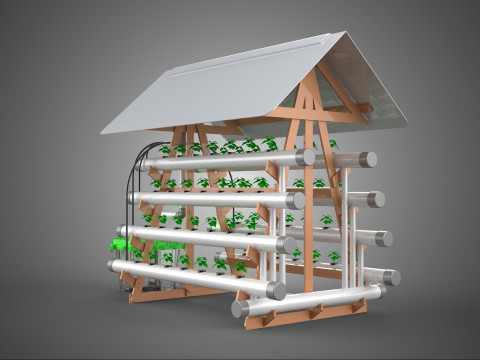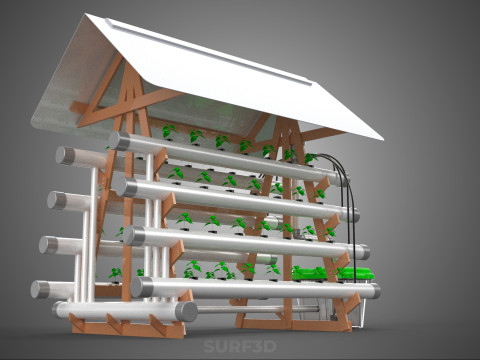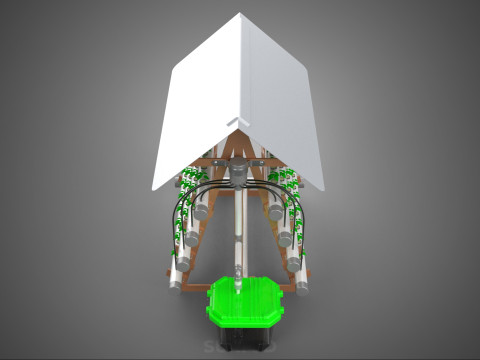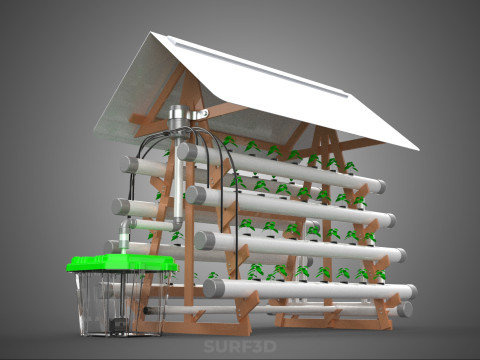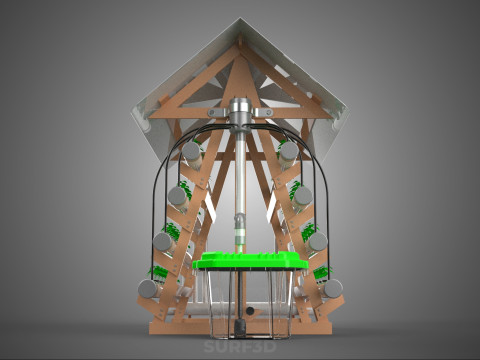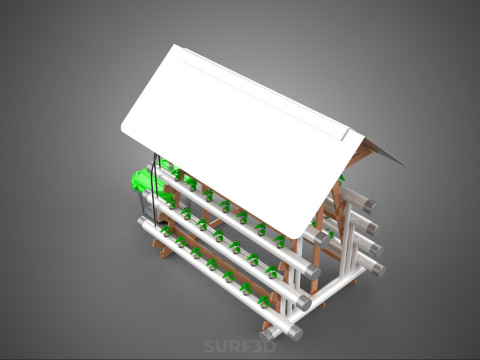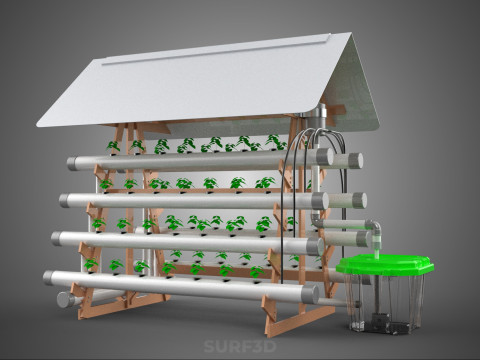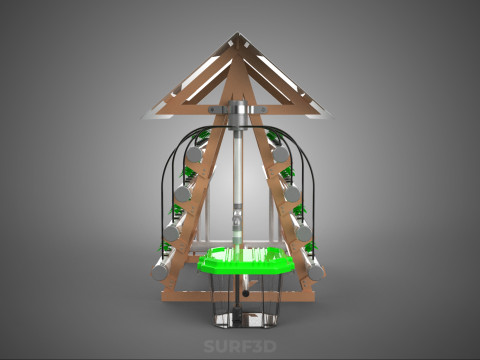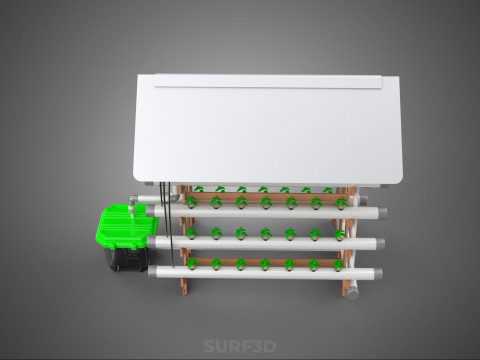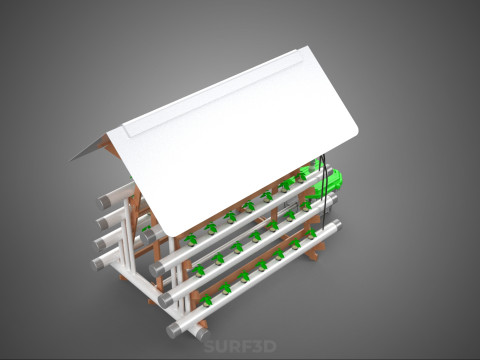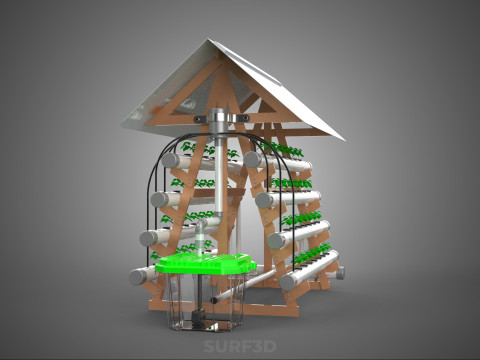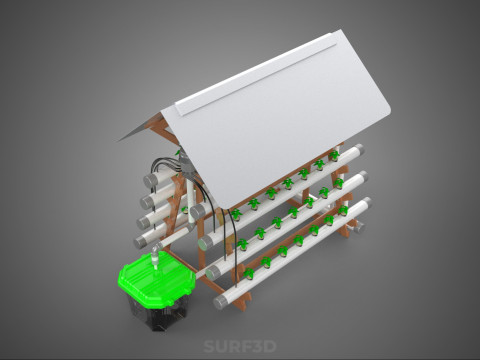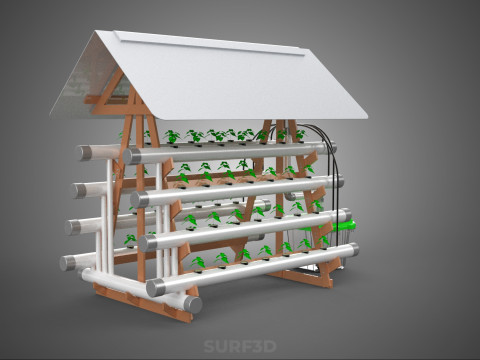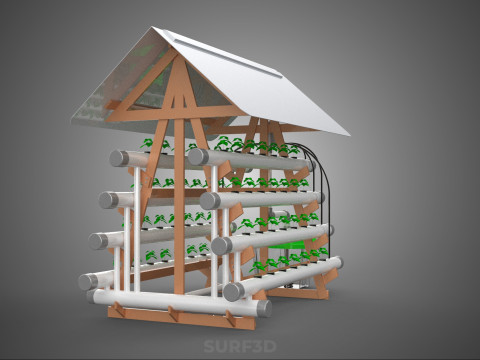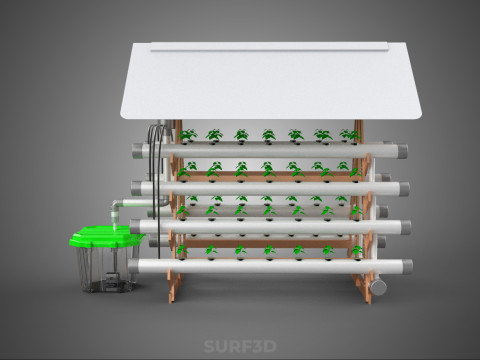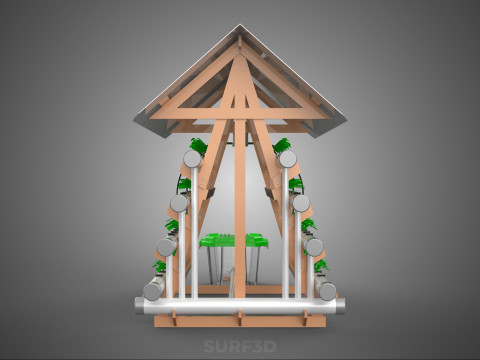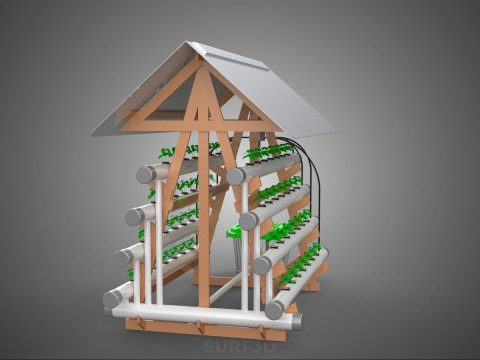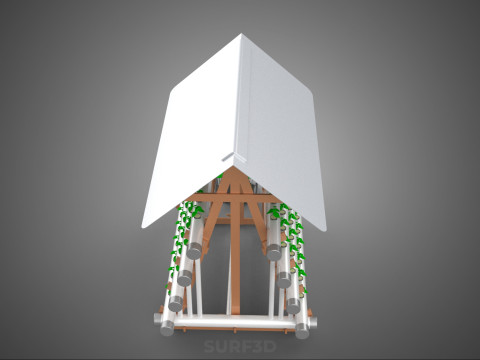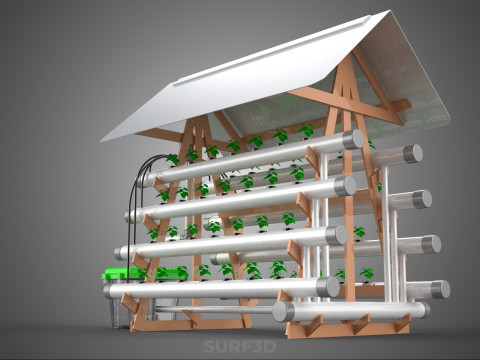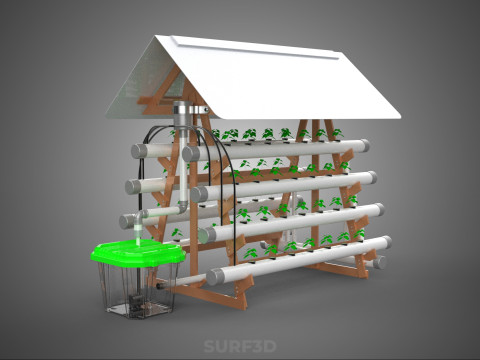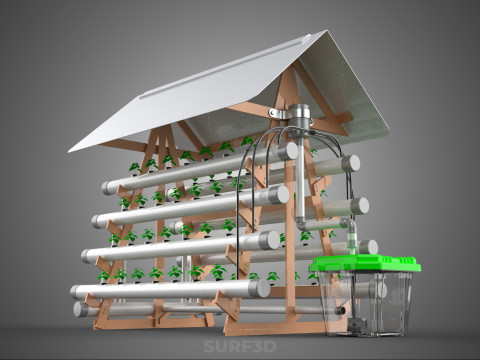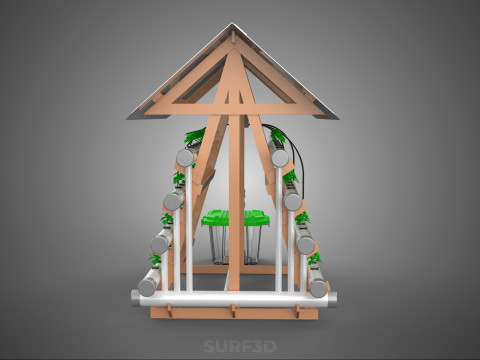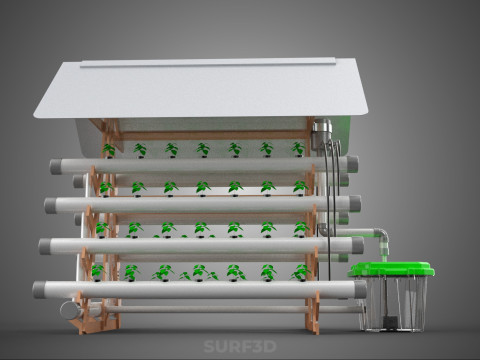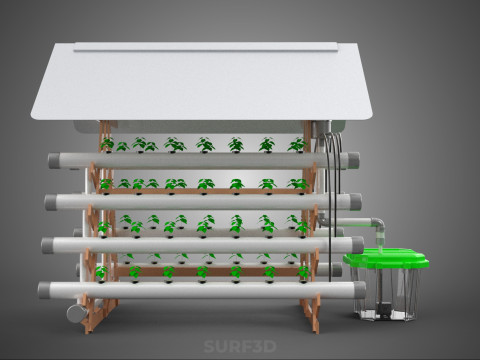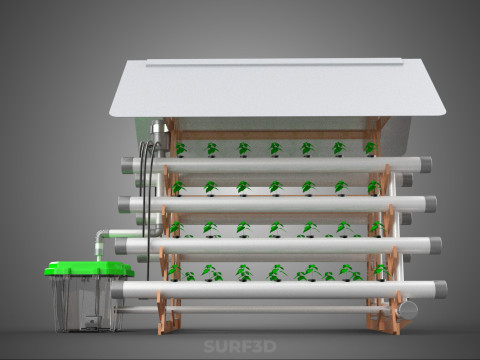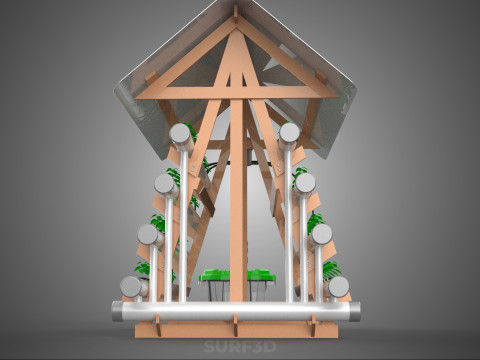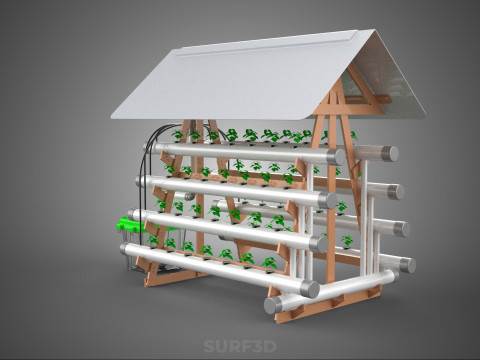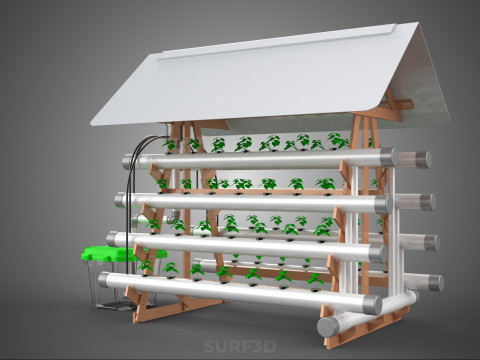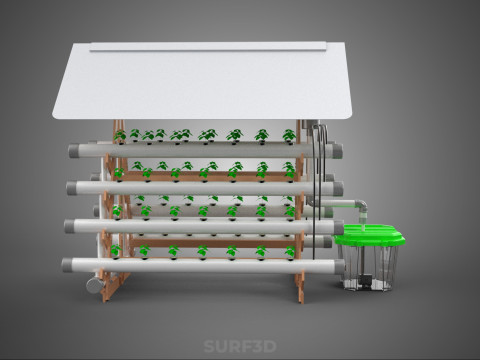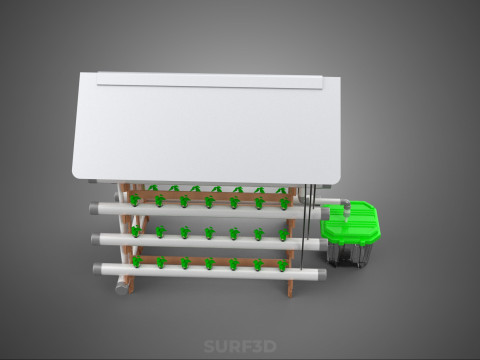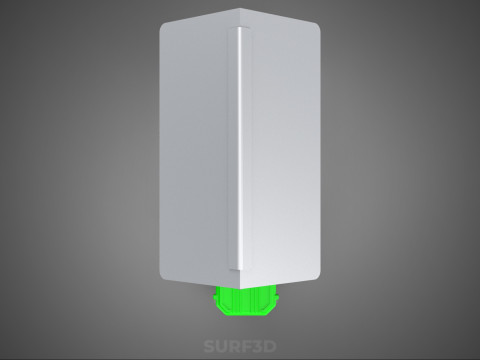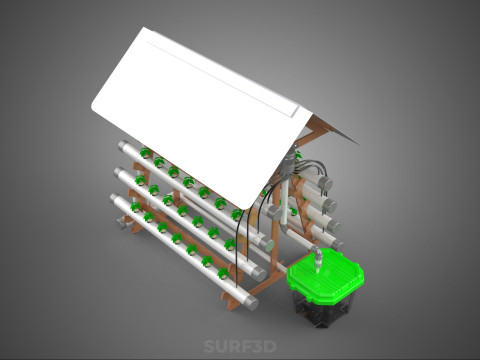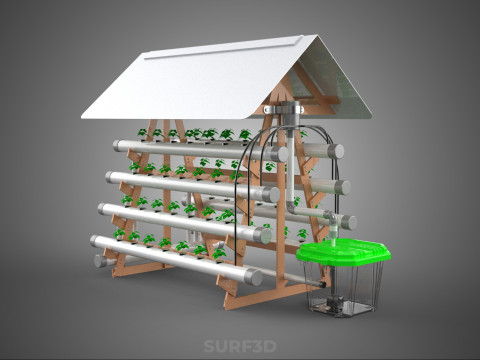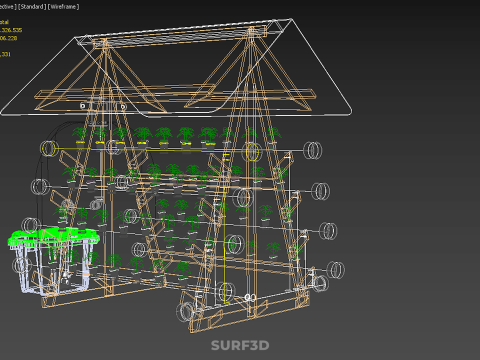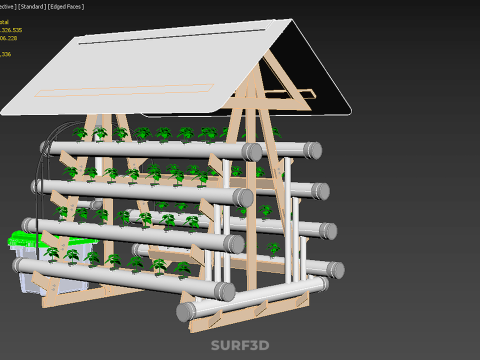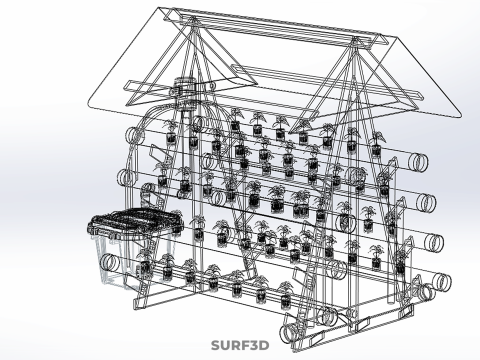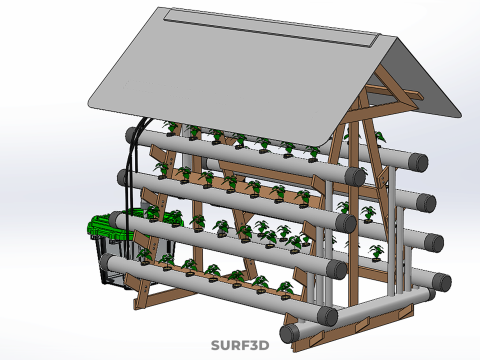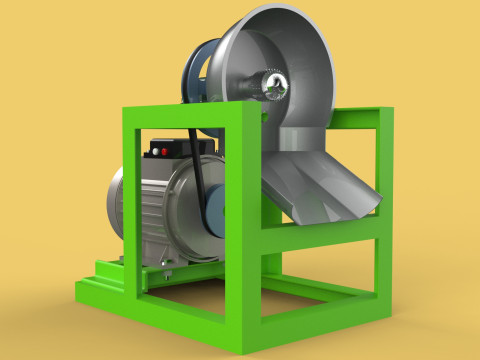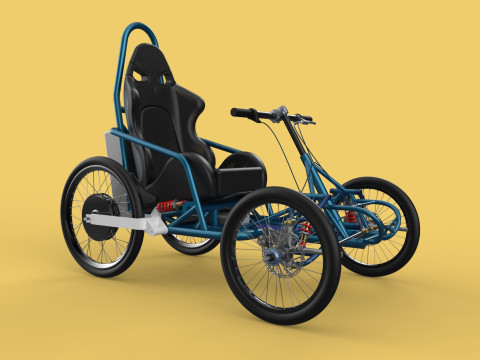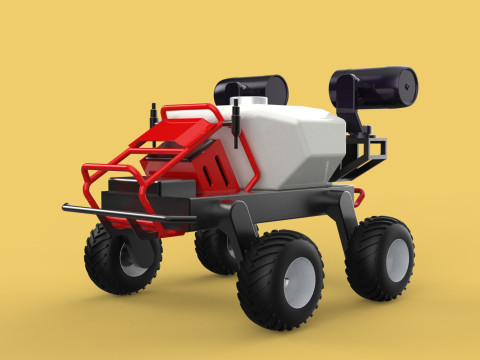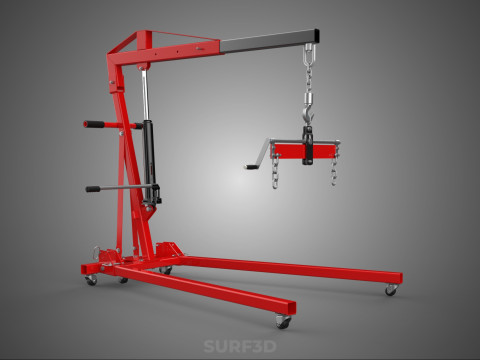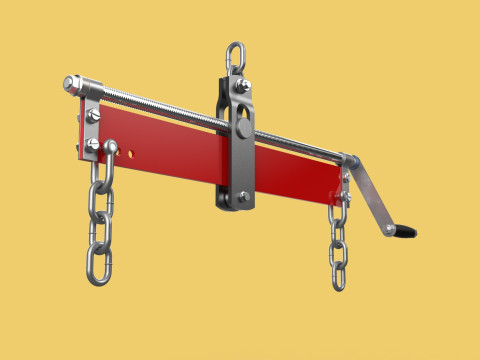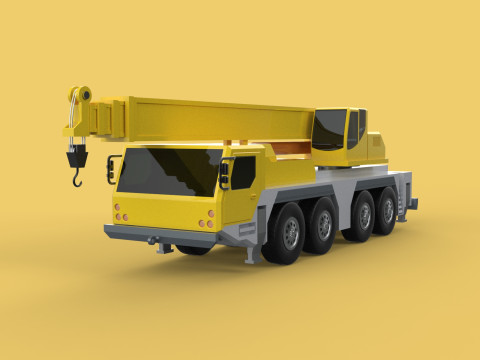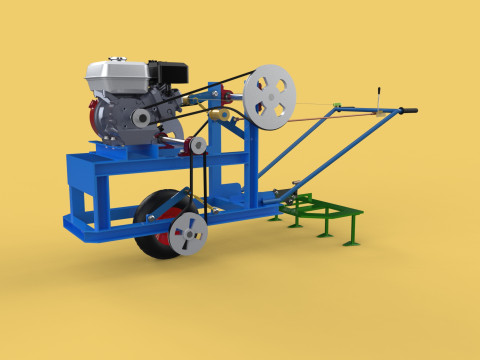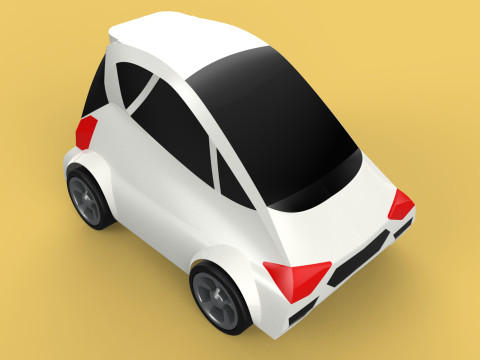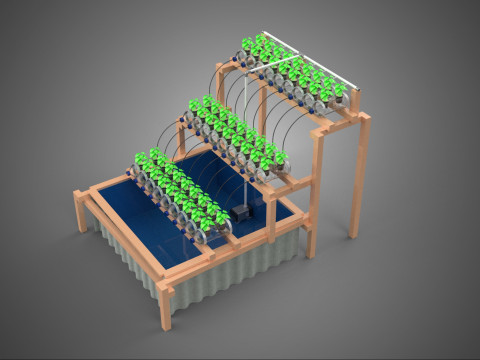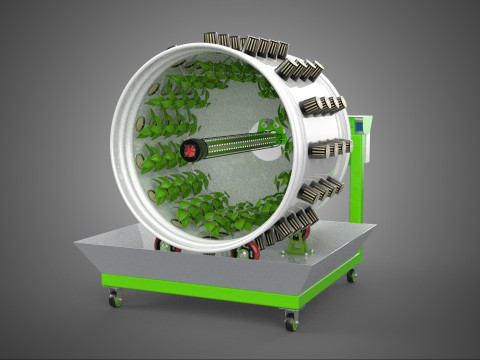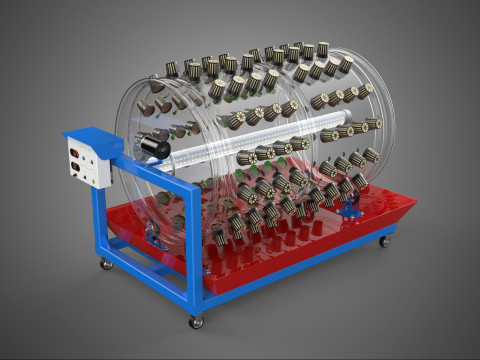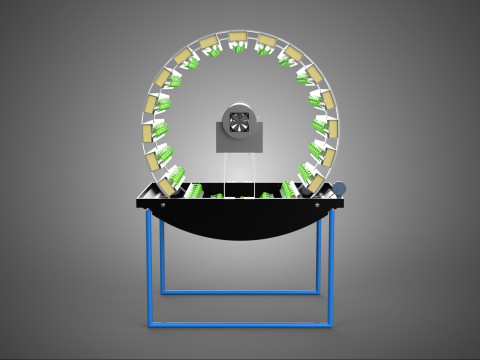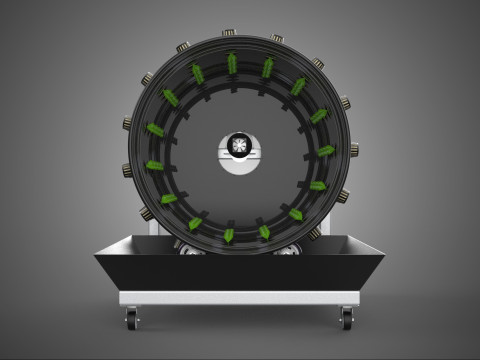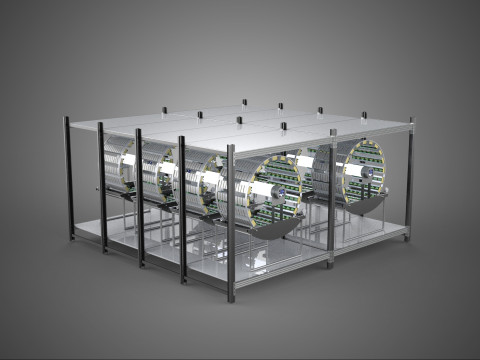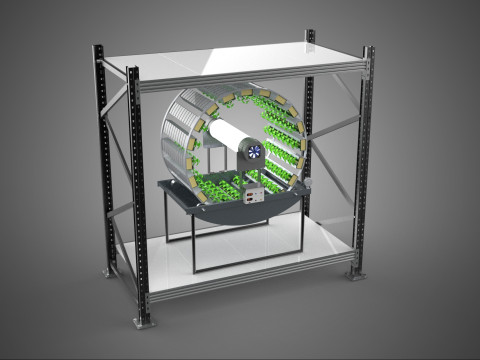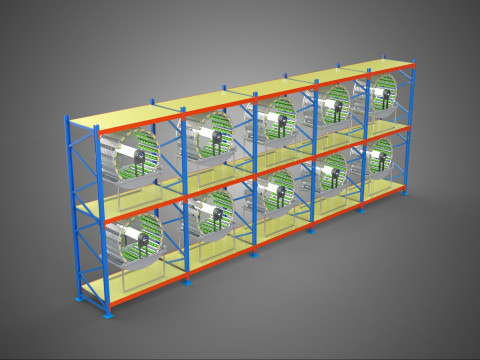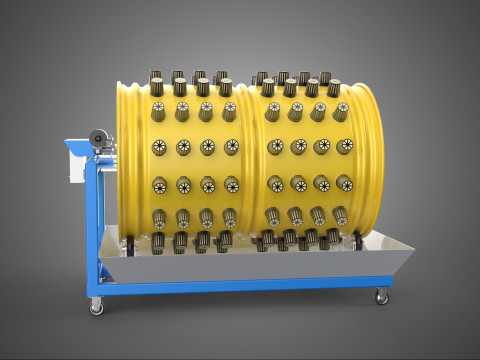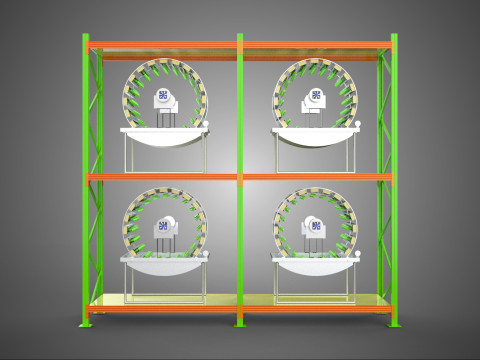VERTICAL HYDROPONIC SOILLESS POT PLANT GROW WATER TANK RESERVOIR 3D Модель
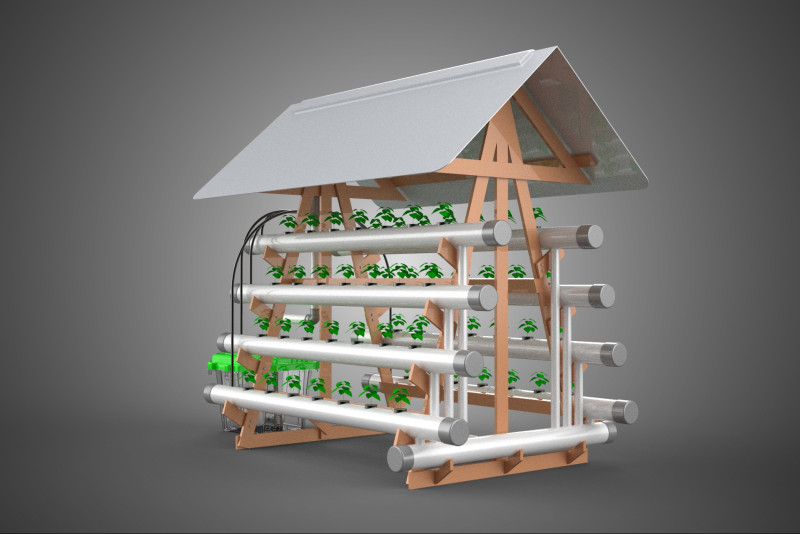
- Доступні формати: Blender3D (.blend) 18.23 MBStereolithography (.stl) 17.09 MBAutodesk FBX (.fbx) 32.14 MBAutodesk 3DS MAX (.max) 31.48 MBGLB (.glb / .gltf) 9.07 MBAutodesk AutoCAD (.dwg) 12.71 MBWavefront OBJ (.obj) 15.65 MBRhinoceros (.3dm) 30.35 MBCollada (.dae) 15.89 MBIGES (.iges) 7.94 MBSTEP (.step) 9.49 MBSketchUp (.skp) 8.97 MB3D Studio (.3ds) 6.24 MBACIS(.sat) 17.08 MB
- Полігони:1326535
- Вершини:906228
- Анімована:No
- Текстури:No
- Скелет:No
- Матеріали:
- Лоу-полі:No
- Колекція:No
- UVW зображення:No
- Плагіни:No
- Готовність до друку:No
- 3D Скан:No
- Зміст для дорослих:No
- PBR:No
- ШІ Навчання:No
- Геометрія:Poly NURBS
- Розгорнуті UVs:Unknown
- Перегляди:153
- Дата: 2025-09-09
- ID Товару:597735
High-quality 3D assets at affordable prices — trusted by designers, engineers, and creators worldwide. Made with care to be versatile, accessible, and ready for your pipeline.
Included File Formats
This model is provided in 14 widely supported formats, ensuring maximum compatibility:
• - FBX (.fbx) – Standard format for most 3D software and pipelines
• - OBJ + MTL (.obj, .mtl) – Wavefront format, widely used and compatible
• - STL (.stl) – Exported mesh geometry; may be suitable for 3D printing with adjustments
• - STEP (.step, .stp) – CAD format using NURBS surfaces
• - IGES (.iges, .igs) – Common format for CAD/CAM and engineering workflows (NURBS)
• - SAT (.sat) – ACIS solid model format (NURBS)
• - DAE (.dae) – Collada format for 3D applications and animations
• - glTF (.glb) – Modern, lightweight format for web, AR, and real-time engines
• - 3DS (.3ds) – Legacy format with broad software support
• - 3ds Max (.max) – Provided for 3ds Max users
• - Blender (.blend) – Provided for Blender users
• - SketchUp (.skp) – Compatible with all SketchUp versions
• - AutoCAD (.dwg) – Suitable for technical and architectural workflows
• - Rhino (.3dm) – Provided for Rhino users
Model Info
• - All files are checked and ****ed for integrity and correct content
• - Geometry uses real-world scale; model resolution varies depending on the product (high or low poly)
• • - Scene setup and mesh structure may vary depending on model complexity
• - Rendered using Luxion KeyShot
• - Affordable price with professional detailing
Buy with confidence. Quality and compatibility guaranteed.
If you have any questions about the file formats, feel free to send us a message — we're happy to assist you!
Sincerely,
SURF3D
Trusted source for professional and affordable 3D models.
More Information About 3D Model :
A Vertical Hydroponic Soilless Pot Plant Grow Water Tank Reservoir refers to a specialized, integral component within an advanced agricultural or horticultural system designed for the cultivation of plants without soil, employing a vertical configuration to maximize space efficiency. This reservoir serves as the primary storage and delivery unit for the nutrient-rich aqueous solution essential for plant growth in a soilless environment.
**Core Function and Design Principles:**
The fundamental purpose of this reservoir is to contain and maintain the precisely formulated nutrient solution that provides all necessary macro- and micronutrients directly to plant roots. Typically constructed from opaque, inert, and food-grade materials such as high-density polyethylene (HDPE) or polypropylene, its design prevents light ***********, thereby inhi***ing algal growth and maintaining the chemical stability and integrity of the nutrient solution. The volumetric capacity and geometric configuration of the reservoir are adaptable, ranging from compact units for domestic use to expansive installations for large-scale commercial operations, dictated by the overall size and demands of the vertical hydroponic system it supports. Key design features often include a wide access point for ease of filling, cleaning, and maintenance, coupled with a securely fitting lid to minimize evaporation, prevent contamination, and maintain solution temperature stability.
**Integration with Vertical Hydroponic Systems:**
In a vertical hydroponic setup, plants are cultivated in stacked layers, vertical towers, or columns, which significantly enhances crop yield per unit of land area compared to conventional horizontal farming methods. The water tank reservoir is strategically positioned, commonly at the base of the system, to facilitate the efficient and controlled delivery of the nutrient solution. A submersible pump, housed within the reservoir, propels the solution upwards through a network of pipes and drippers, distributing it to individual plant pots or grow sites on each vertical tier. Follo***g irrigation, gravity directs the unused solution to drain back into the reservoir, establishing a closed-loop, recirculating system. This design principle is paramount for minimizing water waste and optimizing the utilization of dissolved nutrients.
**Associated Components and System Dynamics:**
Beyond the primary tank, a comprehensive reservoir system integrates several ancillary components critical for maintaining optimal gro***g conditions:
* **Submersible Pump:** The core mechanism for circulating the nutrient solution throughout the vertical structure.
* **Inlet/Outlet Ports:** Secure connections for the plumbing that delivers and returns the nutrient solution to the system.
* **Aeration Device:** Often comprising an air pump and air stone, this component oxygenates the solution, preventing root hypoxia and promoting robust root development.
* **Monitoring Equipment:** Sensors for measuring crucial parameters such as pH (acidity/alkalinity), Electrical Conductivity (EC) (an indicator of nutrient concentration), and temperature are frequently incorporated to ensure the solution remains within optimal ranges for specific plant species.
* **Dosing Pumps:** In more sophisticated, automated systems, these precision pumps can automatically introduce pH adjusters or concentrated nutrient supplements into the reservoir based on real-time sensor data, maintaining a stable chemical environment.
**Soilless Cultivation and Pot Plants:**
The "soilless" aspect underscores the absence of traditional soil as a gro***g medium. Instead, plants are typically situated in individual net pots or containers, often utilizing inert grow media such as rockwool, coco coir, perlite, or clay pebbles. These media provide physical support for the plant structure, anchorage for the roots, and adequate aeration. The pots are integrated into the vertical framework, with plant roots either directly immersed in the nutrient solution (e.g., Deep Water Culture - DWC) or receiving intermittent nutrient flow through methods like Drip Irrigation or Nutrient Film Technique (NFT).
**Advantages and Applications:**
The integration of a specialized water tank reservoir within a vertical hydroponic system confers numerous advantages:
* **Water Efficiency:** Recirculating systems drastically reduce water consumption, often by 90% or more, compared to traditional soil-based agriculture.
* **Nutrient Control:** Precise management of nutrient delivery optimizes plant health, accelerates growth rates, and enhances crop quality.
* **Space Optimization:** Vertical stacking enables high-density cultivation, making it ideal for urban environments, limited land areas, or indoor farming.
* **Reduced Pests and Diseases:** A controlled, soilless environment significantly minimizes the incidence of soil-borne pathogens and common pests.
* **Year-Round Growth:** Cultivation can proceed independently of external climate conditions within controlled environment agriculture (CEA).
Such systems are extensively applied in commercial greenhouses, urban farms, research facilities, and increasingly in domestic and educational settings for gro***g a wide array of crops, including leafy greens, herbs, and various fruiting plants.
**Conclusion:**
The Vertical Hydroponic Soilless Pot Plant Grow Water Tank Reservoir is a foundational and indispensable element of modern precision agriculture. Its sophisticated design and seamless integration facilitate the continuous, automated supply of essential nutrients to plants, supporting robust growth in compact, vertically oriented, and environmentally controlled settings. This technology significantly contributes to sustainable food production practices, addressing challenges related to land scarcity, water conservation, and consistent food supply.
Якщо вам потрібен інший формат, будь ласка, зробіть запит за допомогою тікета підтримки. Ми можемо конвертувати 3D моделі: .stl, .c4d, .obj, .fbx, .ma/.mb, .3ds, .3dm, .dxf/.dwg, .max. .blend, .skp, .glb. Ми не конвертуємо 3d сцени і такі формати, як .step, .iges, .stp, .sldprt тощо!


 English
English Español
Español Deutsch
Deutsch 日本語
日本語 Polska
Polska Français
Français 中國
中國 한국의
한국의 Українська
Українська Italiano
Italiano Nederlands
Nederlands Türkçe
Türkçe Português
Português Bahasa Indonesia
Bahasa Indonesia Русский
Русский हिंदी
हिंदी